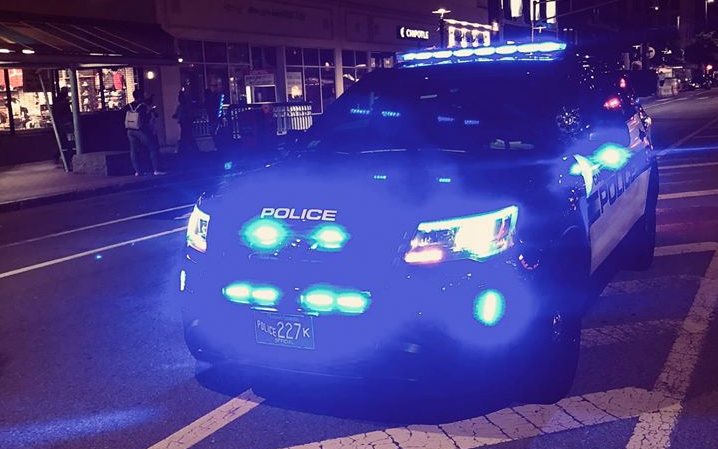Community
Massachusetts data analysis finds no support for patterns of racial disparity in traffic stops

BOSTON – Today, the Executive Office of Public Safety and Security released a report of findings from a baseline analysis of police traffic stop data conducted by a team of researchers from Salem and Worcester State Universities. In 2019, the Massachusetts Legislature passed, and Governor Baker signed An Act Requiring the Hands-Free Use of Mobile Telephones While Driving that prohibits drivers from using electronic devices, including cell phones, unless the device is in hands-free mode. The law also required an annual analysis of police traffic stop data and a public report of its findings.
To fulfill this requirement, EOPSS contracted with Salem State University to analyze local and state police traffic stop data and develop a comprehensive report. The data was provided by the Registry of Motor Vehicles based on information collected from all issued Massachusetts Uniform Citations. Based on the uniform citation data, the research team conducted an aggregate analysis of all stopped motorists, including age, gender, and race. The study also reviewed the date and time of offense, location, whether a search was initiated, and whether the stop resulted in a warning, citation, or arrest.
“An important feature of the hands-free driving law established a research requirement that provides evidence-based insight into factors surrounding traffic stops and to identify any potential patterns of racial disparities. The annual study will contribute to our ability to better understand police interactions with the public and to ensure that the Commonwealth’s traffic laws are enforced in an impartial, equitable, and just way,” said Public Safety and Security Secretary Terrence Reidy.
The goal of the baseline study was to examine possible racial disparities in traffic stops and to gain insight into potential patterns. The study included ten months of stop data from February 2020 through December 2020, evaluating information at a statewide and municipal level. Researchers analyzed law enforcement agencies that conducted 100 or more traffic stops, accounting for over 80% of the 350 law enforcement agencies across the Commonwealth.
According to the data, Massachusetts law enforcement agencies conducted a total of 425,702 traffic stops during the period studied. Municipal police conducted approximately 60% of the traffic stops, while state police conducted 40%.
The statewide analysis found that of the drivers stopped, 65% were male, 34% were female, and about 1% were non-binary. The mean age of stopped drivers was 37 years old, with 39% age 29 or younger and 61% age 30 or older. White drivers accounted for 65% of traffic stops, while Black motorists accounted for 16%. Hispanic drivers represented 15% of stops, and 4% were determined to be either Asian, Asian-Pacific, American Indian, Middle Eastern, or Pacific Islander. Nearly 68% of drivers stopped were not residents of the community where the stop occurred.
Researchers applied the “Veil of Darkness” (VoD) analysis to study the racial distribution of traffic stops. The VoD method, first developed in 2006 by renowned researchers Jeffrey Grogger and Greg Ridgeway, is considered the gold standard of analysis for identifying patterns of racial differences. The VoD test compares stops made in darkness to those made in daylight, based on the logic that police officers are less likely to be able to determine a driver’s race at night than during the day.
The statewide VoD analysis found no support for patterns of racial disparity in traffic stops. According to the report, non-white motorists are 36% less likely to be stopped in daylight (when they could potentially be seen and racially profiled for a stop) than in darkness.
Of the more than 280 police agencies with enough stops to obtain meaningful analysis, researchers found that non-white drivers were more likely to be stopped during the day than night in three instances: the Massachusetts State Police Troop H-3 in Foxboro and the Hadley and Ludlow Police Departments. Researchers caution that this statistical significance could stem from several factors beyond the scope of the data, including whether the stop was discretionary or due to a radio call, motorist behavior, or the triggering offense.
“This baseline research should serve as a starting point for deeper understanding, continued discussions, and further reflection. We caution that our findings do not confirm racial profiling and any incidents of statistical significance could have a variety of explanations other than officer bias,” said Salem State researcher Gina Curcio, Ph.D.
Pursuant to the statute, EOPSS will consult with the Massachusetts Office of the Attorney General to determine next steps based on research findings, including whether additional data collection or training is required for select law enforcement agencies.
EOPSS will convene three virtual public hearings to present the analysis and accept public testimony regarding the report. The public hearing schedule includes:
Monday, February 28, 2022 from 10 a.m. – 12 p.m.
Tuesday, March 1, 2022 from 3:30 – 5:30 p.m.
Wednesday, March 2, 2022 from 1 – 3 p.m.
Written comments will also be accepted until 5:00 p.m., Wednesday, March 2, 2022. They may be emailed to michaela.martini@mass.gov or mailed to: Michaela Martini, Criminal Justice Advisor, Executive Office of Public Safety and Security, One Ashburton Place, Room 2133, Boston, MA 02108.





Patty
February 7, 2022 at 7:05 pm
Great